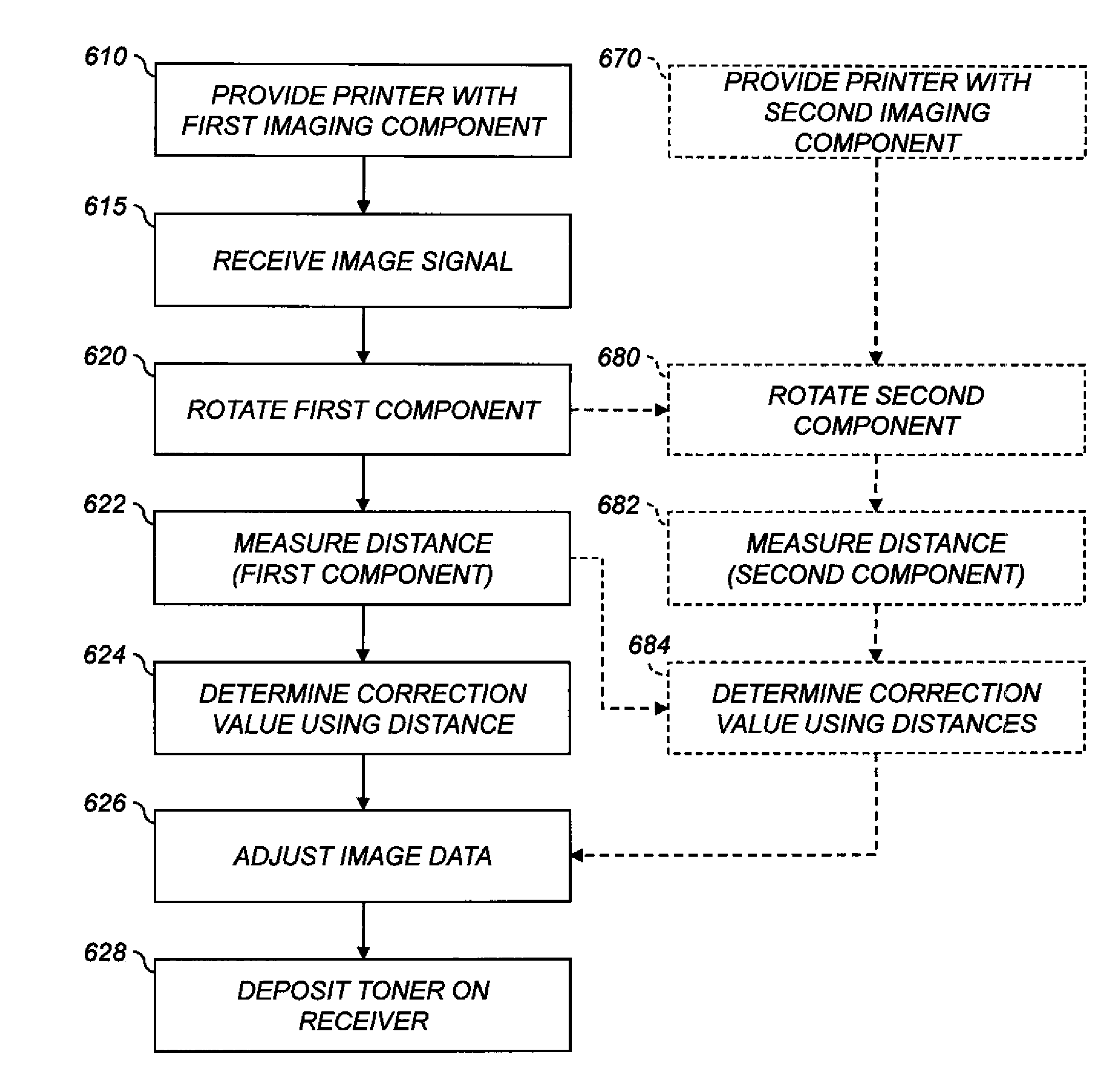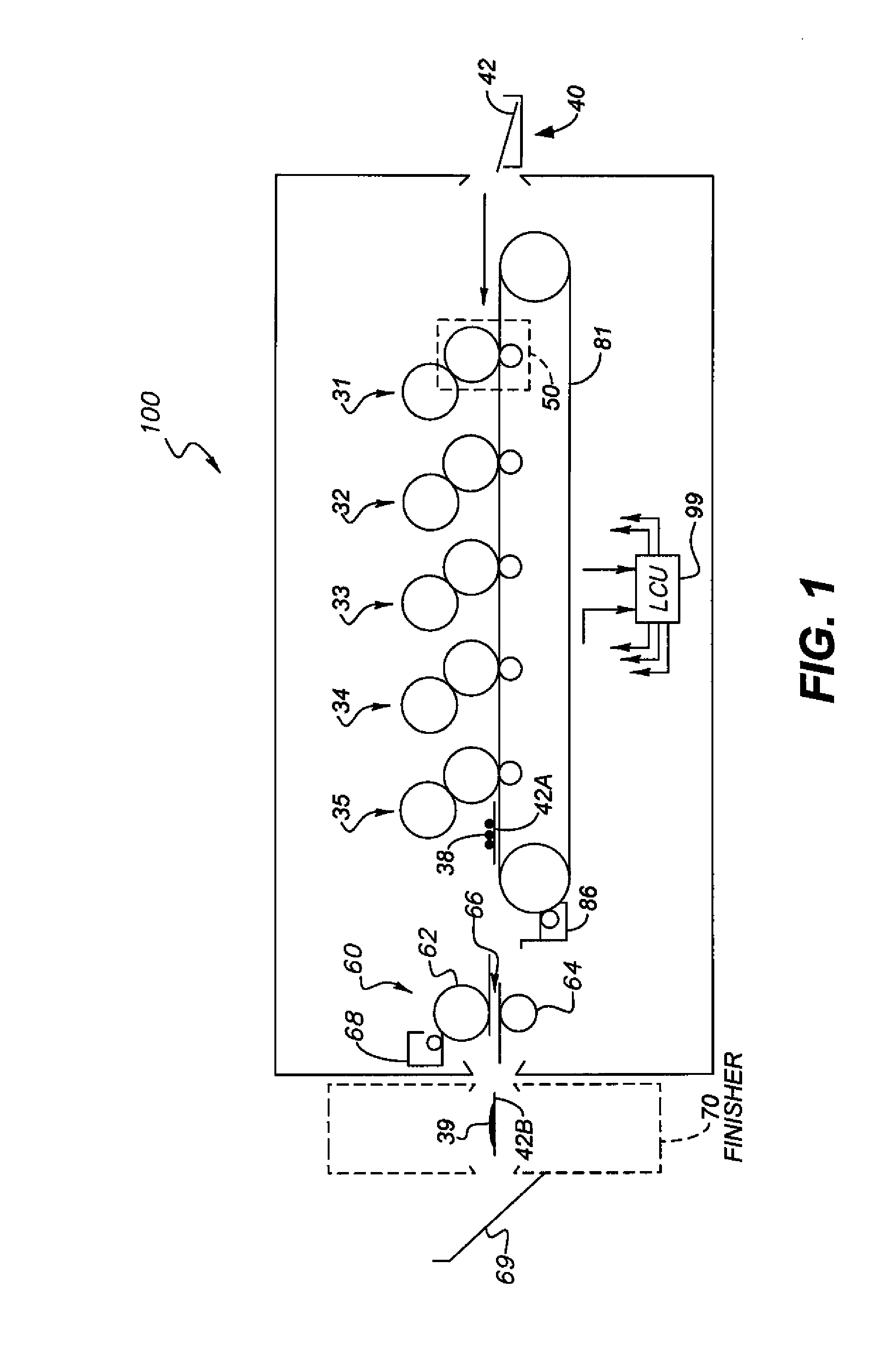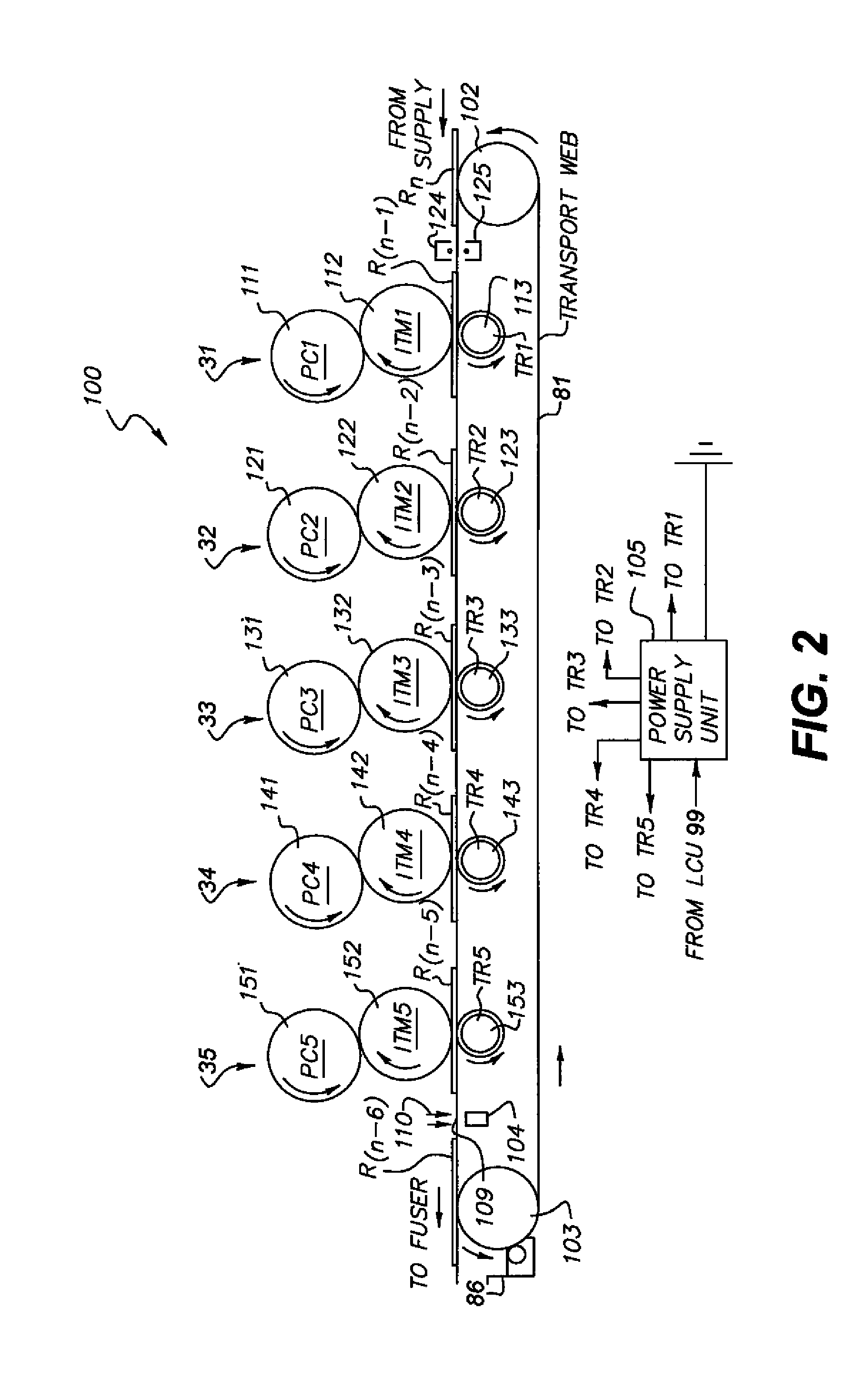Compensating for periodic nonuniformity in electrophotographic printer
- Summary
- Abstract
- Description
- Claims
- Application Information
AI Technical Summary
Benefits of technology
Problems solved by technology
Method used
Image
Examples
Embodiment Construction
[0053]As used herein, the terms “parallel” and “perpendicular” have a tolerance of ±10°.
[0054]The term “variation” refers to a mechanical or electrical non-ideality or characteristic that has a negative effect on the image quality of a printed image, or on the ability of a printer to reproduce a desired aim image or density.
[0055]The terms “nonuniformity,”“defect,” and “artifact” refer to detectable or measurable errors in the reproduction by a printer of a given aim. For example, a banding artifact is a stripe that extends in the cross-track direction and that has a density or densities different than the aim density or densities in the stripe. The term “nonuniformity” refers to the fact that artifacts are generally detected using test targets that would be uniform in density, if not for the artifacts.
[0056]FIGS. 12A and 13A are halftoned representations of simulated image artifacts. FIGS. 12B and 13B show discrete Fourier transforms of columns of those images, with frequency on th...
PUM
 Login to View More
Login to View More Abstract
Description
Claims
Application Information
 Login to View More
Login to View More - R&D
- Intellectual Property
- Life Sciences
- Materials
- Tech Scout
- Unparalleled Data Quality
- Higher Quality Content
- 60% Fewer Hallucinations
Browse by: Latest US Patents, China's latest patents, Technical Efficacy Thesaurus, Application Domain, Technology Topic, Popular Technical Reports.
© 2025 PatSnap. All rights reserved.Legal|Privacy policy|Modern Slavery Act Transparency Statement|Sitemap|About US| Contact US: help@patsnap.com



